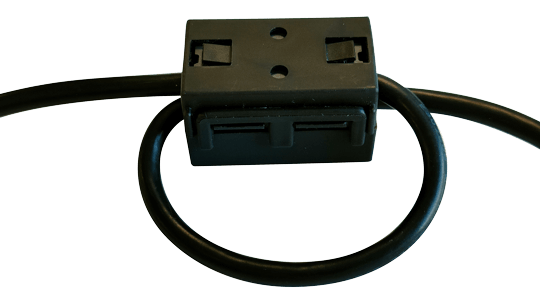- Contact Us
- |
- Jobs
- |
- About Us
- |
- |
-
- Personal information
- Organization
- Quotes
- Address book
- Login
- Don't have an account? Sign-up
EMC ferrite cable clamps
- Home
- EMI shielding cables & entries
- EMC ferrite cable clamps
How does a ferrite clamp work?
A ferrite terminal can reduce common mode interference. Due to the magnetically guided action of the ferrite, a coil is placed in series with the common mode current-carrying circuit.

The coil ensures that the common mode impedance is increased. This weakens the unwanted interference current.
The impedance vs number of windings and the frequency.

How to apply?
The correct application of ferrite differs per situation and requires very specific expertise and experience.
Practical method:
Fortunately, a good result can often be achieved through "trial and error". By Applying ferrite clamps to all suspected cables until the problem is resolved. Then, if necessary, determine which clamps can be removed without the interference returning.
In some situations it is possible to increase the effectiveness of a clamp. This is done by feeding several windings of a cable through a clamp.

An example of the effect of the number of windings
NiZn for lower frequencies
| Typical impedance Ω | |
|---|---|
| 10 MHz | 95 |
| 25 MHz | 160 |
| 100 MHx | 263 |
| 250 MHz | 311 |
Available dimensions
| Part number | Maximum cable diameter |
|---|---|
| 8260-NiZn-6.3 | 6.3mm |
| 8260-NiZn-9.85 | 9.85mm |
| 8260-NiZn-12.7 | 12.70mm |
MnZn for higher frequencies
| Typical impedance Ω | |
|---|---|
| 1 MHz | 20 |
| 5 MHz | 75 |
| 10 MHz | 104 |
| 25 MHz | 170 |
| 100 MHx | 315 |
| 250 MHz | 380 |
Available dimensions
| Part number | Maximum cable diameter |
|---|---|
| 8260-MnZn-6.3 | 6.3mm |
